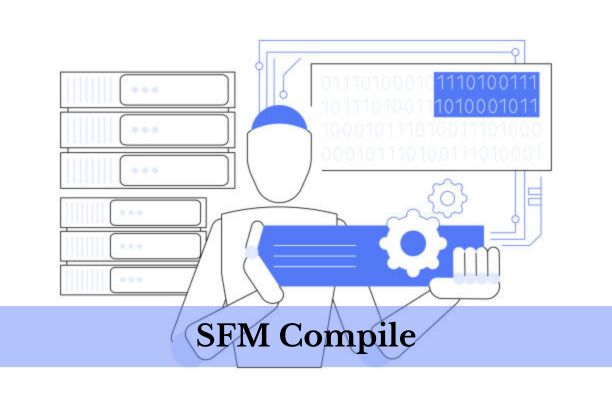Understanding SFM Compile
SFM Compile is an essential process for creators using Source Filmmaker (SFM) to bring their animations to life. The process ensures that all assets, models, textures, and sequences are properly compiled into a final product. Whether you are creating cinematic scenes or short animations, mastering SFM Compile is crucial for achieving a polished and professional result.
The Importance of SFM Compile in Animation
SFM Compile plays a vital role in animation by bringing all elements together in a cohesive manner. Without proper compilation, projects can face issues such as missing textures, broken animations, or inconsistent lighting. Understanding how SFM Compile works can help streamline your workflow and prevent common errors.
Enhancing Animation Quality
Proper compilation ensures smooth animation playback, higher frame rates, and improved rendering quality. It allows creators to optimize their scenes while maintaining high fidelity.
Resolving Texture and Model Issues
SFM Compile helps in resolving missing textures, broken models, and inconsistent lighting, ensuring that every scene appears exactly as intended.
Preparing for Export
Once a project is compiled, it is ready for export in various formats, making it suitable for further editing, sharing, or publishing.
Steps to Properly Execute SFM Compile
Setting Up the Scene
Before starting the SFM Compile process, it is important to set up the scene correctly. Ensure that all models, lighting, and camera angles are properly arranged to avoid any compilation errors.
Choosing the Right Models and Textures
- Use high-quality models to enhance visual appeal
- Ensure textures are properly assigned to avoid missing materials
- Check for compatibility issues with different assets
Adjusting Lighting and Shadows
- Proper lighting enhances the realism of the animation
- Test different lighting settings to achieve the desired effect
- Ensure shadows are consistent with the scene
Compiling the Animation
Once the scene is set, the next step is to compile the animation. This involves rendering, optimizing frame rates, and exporting the sequence in a suitable format.
Rendering and Frame Optimization
- Adjust rendering settings for optimal performance
- Optimize frame rates to prevent lag or stuttering
- Use efficient compression settings to maintain quality while reducing file size
Exporting in Different Formats
- MP4 for standard video output
- AVI for high-quality preservation
- PNG sequences for further editing in post-production software
Troubleshooting Common Issues in SFM Compile
Despite following the correct process, issues may arise during compilation. Identifying and fixing these problems is essential for a smooth workflow.
Fixing Missing Textures
- Check file paths to ensure textures are properly linked
- Reapply missing materials manually if necessary
- Convert textures to compatible formats
Resolving Compilation Errors
- Debug error messages to understand the root cause
- Update outdated models or assets that may be causing conflicts
- Clear temporary files and restart SFM for a fresh compilation
Improving Performance and Reducing Lag
- Close unnecessary background applications
- Lower rendering quality if needed for a smoother experience
- Optimize assets to reduce system load
Advanced Techniques for SFM Compile
Using Third-Party Software for Enhancement
Several third-party tools can enhance the SFM Compile process by improving rendering quality and optimizing workflow efficiency.
Adobe After Effects for Post-Processing
- Add special effects and enhancements
- Improve color grading and visual appeal
Blender for Additional Animations
- Integrate Blender animations into SFM for complex sequences
- Utilize advanced rendering techniques for high-quality output
Customizing SFM Compile Settings
Adjusting compile settings can help optimize performance and improve final output quality.
Modifying Render Settings
- Adjust sample rates for better anti-aliasing
- Enable motion blur for smoother animation effects
Using Console Commands
- Execute advanced commands to tweak rendering settings
- Automate repetitive tasks for efficiency
Best Practices for SFM Compile
Organizing Project Files
- Maintain a structured folder system for easy navigation
- Backup important files to prevent data loss
Keeping Software Updated
- Regularly update SFM to access new features and bug fixes
- Update graphics drivers for optimal performance
Experimenting with Different Rendering Techniques
- Test various rendering styles to find what works best for your animation
- Utilize depth of field and lighting variations for enhanced visuals
Conclusion
Mastering SFM is essential for animators and creators who want to produce high-quality animations. By understanding the setup process, troubleshooting common issues, and utilizing advanced techniques, users can streamline their workflow and enhance their final output. Whether you are a beginner or an experienced animator, refining your SFM skills will significantly improve the quality of your animations.
FAQs
What is SFM Compile used for?
SFM Compile is used to render and optimize animations created in Source Filmmaker, ensuring smooth playback and high-quality visuals.
Why do textures go missing in SFM Compile?
Textures may go missing due to incorrect file paths, incompatible formats, or missing assets. Ensuring proper linking can resolve this issue.
Can I edit an animation after compiling in SFM?
Yes, you can edit the animation further using post-processing software like Adobe After Effects or Blender.
How can I reduce lag during SFM Compile?
Lowering rendering quality, optimizing assets, and closing background applications can help reduce lag.
What are the best export formats for SFM animations?
MP4 is ideal for general use, while PNG sequences and AVI formats are preferred for high-quality editing.

